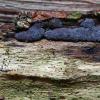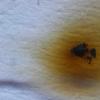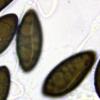
09-01-2026 17:41
Arnold BüschlenHallo, F. dilatata wird von vielen Bryoparasiten

10-01-2026 20:00
Tom SchrierHi all,We found picnidia on Protoparmeliopsis mur

07-01-2026 22:22
 Danny Newman
Danny Newman
Tatraea sp. on indet. hardwood The Swag, Great Sm

10-01-2026 01:18
 Danny Newman
Danny Newman
cf. Neovaginatispora fuckelii on indet. shrub Pre

07-01-2026 10:24
 Danny Newman
Danny Newman
Pezicula sp. on indet. hardwood Appalachian Highl

09-01-2026 10:08
 Blasco Rafael
Blasco Rafael
Hola, en el mismo habitat que la anteriorRetamaDia

08-01-2026 21:22
 Blasco Rafael
Blasco Rafael
Hola, He recogido esta muestra de Orbilia sobre Re

07-01-2026 17:29
 Marc Detollenaere
Marc Detollenaere
Dear Forum,On a barkless Populus I found some smal

10-11-2021 17:33
 Riet van Oosten
Riet van Oosten
Add-on topic http://www.ascofrance.com/forum/7059

07-01-2026 10:05
 Danny Newman
Danny Newman
cf. Chaetospermum on XylariaCosby Campground, Grea
Hypoxylon julianii ?
Peter Thompson,
15-12-2013 11:50
I have found some effuse fruit bodies of a Hypoxylon, which I believe may be H. julianii. There do not appear to be any British records, so I would be grateful for confirmation, or otherwise. The substrate is decorticated hardwood, which I believe to be Betula pendula.
I have attached images of the fruit bodies photographed at 1-1 and 4.5 times magnification. A sketch of the microscopy and photograph of the orange KOH extractable pigmentation are also attached.
Thank you,
Peter.
Jacques Fournier,
15-12-2013 14:21

Re : Hypoxylon julianii ?
Hello Peter,
indeed the spores and the KOH reaction might fit H. julianii, but I dont recognize it on the photos of stromata. They rather look like H. fusum. Is there any possibilty that two different species are mixed on the same piece of wood?
A key feature of H. julianii is the presence of blood-red waxy granules just above the perithecia, something to check with a razor blade under a stereomicroscope. Otherwise if it is not conclusive I would gladly take a look at your collection.
Cheers,
Jacques
indeed the spores and the KOH reaction might fit H. julianii, but I dont recognize it on the photos of stromata. They rather look like H. fusum. Is there any possibilty that two different species are mixed on the same piece of wood?
A key feature of H. julianii is the presence of blood-red waxy granules just above the perithecia, something to check with a razor blade under a stereomicroscope. Otherwise if it is not conclusive I would gladly take a look at your collection.
Cheers,
Jacques
Peter Thompson,
15-12-2013 15:26
Re : Hypoxylon julianii ?
Hello Jacques,
Thank you for your reply.
I don't think that there is any doubt that my photograph, KOH pigment test and microscopy are from the same Hypoxylon species (though not the same part of it).
My camera has not captured the colour of the fruit body in either image with complete accuracy, though.
Unfortunately, I do not have a stereomicroscope to check for the red granules, which, I guess are too small to see with a dissecting microscope, as I have just tried.
I had eliminated H. fuscum because of the spore size extending beyond the 16um quoted on your website of Pyrenomycetes from South Western France.
If you can email your address to me, I will send part of the sample so that you can have a look. Thank you for offering to do so.
With Best Wishes,
Peter.
Thank you for your reply.
I don't think that there is any doubt that my photograph, KOH pigment test and microscopy are from the same Hypoxylon species (though not the same part of it).
My camera has not captured the colour of the fruit body in either image with complete accuracy, though.
Unfortunately, I do not have a stereomicroscope to check for the red granules, which, I guess are too small to see with a dissecting microscope, as I have just tried.
I had eliminated H. fuscum because of the spore size extending beyond the 16um quoted on your website of Pyrenomycetes from South Western France.
If you can email your address to me, I will send part of the sample so that you can have a look. Thank you for offering to do so.
With Best Wishes,
Peter.
Jacques Fournier,
26-12-2013 16:02

Re : Hypoxylon julianii ?
Hello Peter,
thanks for having quiclky sent your specimen, I just got it for Xmas!
Upon close examination, it has dull yellow waxy granules above and between the perithecia that release an olivaceous yellow pigment in KOH, thus it is not H. julianii. Based on the ascospores provided with a sigmoid germ slit (photo attached) and overall stromatal habit it is clearly an effuse form of a member of the H. fuscum group.
In this group there seems to be some host specificity, more or less correlated with ascospores dimensions (see Petrini & Petrini 1987, Sydowia 40) but without clear support. I recorded ascospores dimensions (13,0) 13,8 - 15,6 (16,2) x (5,2) 5,5 - 6,3 (6,8) µm, Q = (2,2) 2,3 - 2,66 (2,7) ; N = 40, Me = 14,6 x 5,9 µm ; Qe = 2,5, a size range in agreement with collections on alder, especially A. viridis, according by Petrini & Petrini. It is difficult to assess whether the wood of your sample is Betula or Alnus, but of course it is not A. viridis.
This collection is therefore very interesting since it does not support well the first results and suggests that the things are probably more complicated than expected and require cross checking with other characters.
I can just encourage you to gather further observations on H. fuscum on different hosts in your region. If you send me your postal address I will gladly send you a specimen of H. julianii to help you recognize and find in it the UK.
Cheers,
Jacques
thanks for having quiclky sent your specimen, I just got it for Xmas!
Upon close examination, it has dull yellow waxy granules above and between the perithecia that release an olivaceous yellow pigment in KOH, thus it is not H. julianii. Based on the ascospores provided with a sigmoid germ slit (photo attached) and overall stromatal habit it is clearly an effuse form of a member of the H. fuscum group.
In this group there seems to be some host specificity, more or less correlated with ascospores dimensions (see Petrini & Petrini 1987, Sydowia 40) but without clear support. I recorded ascospores dimensions (13,0) 13,8 - 15,6 (16,2) x (5,2) 5,5 - 6,3 (6,8) µm, Q = (2,2) 2,3 - 2,66 (2,7) ; N = 40, Me = 14,6 x 5,9 µm ; Qe = 2,5, a size range in agreement with collections on alder, especially A. viridis, according by Petrini & Petrini. It is difficult to assess whether the wood of your sample is Betula or Alnus, but of course it is not A. viridis.
This collection is therefore very interesting since it does not support well the first results and suggests that the things are probably more complicated than expected and require cross checking with other characters.
I can just encourage you to gather further observations on H. fuscum on different hosts in your region. If you send me your postal address I will gladly send you a specimen of H. julianii to help you recognize and find in it the UK.
Cheers,
Jacques




